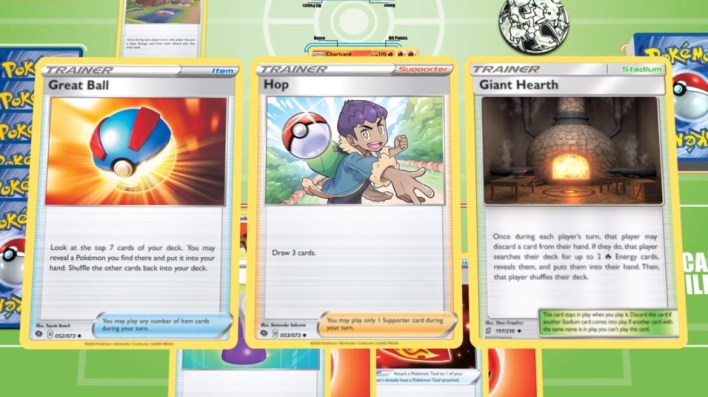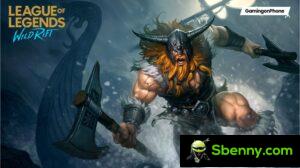The latest addition to Pokemon’s roster of mobile games was The Pokemon Trading Card Game. The game is now available for the Canadian Regional Server Test. For those not used to the basics of the physical card game, we have a Beginner’s Guide you could refer. In this piece, we will discuss how to use Trainer cards more effectively in the Pokemon TCG Live game. The Trainer cards they may seem to many like unnecessary additions to the game, but they are the true orchestrators of a Card Battle. To know the basics of this game, read our previous articles on this game. For now, let’s get started.
Types of all Trainer Cards in Pokemon TCG Live
As mentioned, this guide would focus solely on the Trainer cards available in the game. There are three types of Trainer Cards available in the game. All three types have their usefulness, pros and cons. Furthermore, each category of Trainer cards can be of different varieties. So, all the cards will not fit into our guide, however we will cover all the necessary details at least for the initial stages.
Object card
The most basic type of Trainer cards, which gets along well with Pokemon cards. You can attach a lot of Item cards to your Pokemon before they attack. It is really important to read with patience what is written on each Item Card, to plan strategies accordingly.
A Pokemon Tool Card is a special type of Item Card, which when attached to a Pokemon, stays with it until the end of the game, thereby increasing its powers. When the Pokemon is eliminated, the item card goes into the discard pile along with it.

Fan cards
They are named after the characters in the anime and are very powerful types of Trainer Cards. Players can only play 1 fan card per shift. Some Fan Cards are useful if you want to create problems for the opposition. Furthermore, some benefit the user enormously.
Stadium cards
Stadium cards are those that affect the playing area and affect both players. Alone 1 Stadium Card can be placed at a time. If placed once, it remains until the end of the game, until another Stadium card replaces it. Most Stadium Cards benefit both users, depending on the situation.
How to use Trainer Cards effectively in Pokemon TCG Live
First of all, get rid of the idea that Trainer Cards are useless. Many beginners tend to fill their decks with only Pokemon and Energy Cards. A perfect and relevant collection of Trainer Cards in the deck can win a game for you. Then, read the next part to the end.
- When building your deck, choose only the relevant Trainer cards. If your strategy is to stack and assign a lot of Energy cards to your Attacker and make a multiplier move to your opponent, choose the Trainer cards that can draw Energy Cards from the deck and discard the stack.
- In case the strategy is to have a lot of base Pokemon on the bench, choose Trainer Cards that support that particular cause.
- Also, remember that Stadium Cards affect both players. So, if you are playing a Stadium card from your hand that could benefit your opponent more than you, try to avoid playing those Stadium cards.
A systematic analysis of each type of use of the Trainer Card is provided in the following subpart. Read to the end.
Using Item Cards
There are a huge amount of cards available in the game. So we would use the decks already provided in the game for starters as references. Let us now consider the Quick-hit Malama r Deck in the game. This deck requires the maximum amount of Quick Attack Cards in hand. Then choose the Item cards accordingly.
Even the Blissey V deck requires that the maximum number of Energy Cards to be assigned to Blissey, therefore, Find Energy Item Cards are advantageous. Now, Blissey V’s HP is already high, so Cape of Toughness and Potion Item Cards would further increase HP and cure Pokemon respectively.

Another very important type of Item Card is the Pokémon Fetcher. Items like Great Ball and Basic Ball are great for drawing Pokemon cards from the deck. Remember that one can use as many Item cards as he wants in a particular move. When you start a turn, play the damage healing cards first. Then play the Energy cards (if any), so that you get better options for the Energy Cards than those at hand.
You can only link 1 Pokemon tool to a Pokemon, so be careful which one you choose. In case you fail to place the desired Active Pokemon, choose the Air Balloon Item card, which reduces the cost of the Pokemon’s Retreat. Using Item Cards that require the flip of a coin, perhaps a little risky and dependent on luck to use, but in the end can be very beneficial.
Use of Fan Cards
Support Cards can only be used once per turn. So play them accordingly. Most Support Cards are about drawing cards from the deck. Supporters who make you discard your hand and draw cards from the deck are very useful. They are especially useful when you don’t have a good hand with cards. Also, if you have very few (1-2) cards including that card, use it immediately.
The more cards you have, the better. The Professor cards (such as Magnolia, Oak, Birch, Rowan, etc. are these types of cards). However, only use them when needed, but don’t use them because you have them in your hand. If you do, you may lose decent cards from your hand.

Additionally, Boss Order Cards help you switch between your opponent’s Active and Benched Pokémon. Also, whatever Fan Card you intend to take, remember to read the instructions on the cards carefully, and always play them at end point of your turn.
Perfect Selection and Use of Stadium Cards
Stadium cards affect both players. In case you don’t have any cards that can remove Stadium Cards, try to avoid using them. Also, it is highly recommended not to have many Stadium cards in the deck. 1-2 gets the job done most of the time. Try to predict your opponent’s strategy and play the Stadium Cards accordingly.

Make sure your opponent isn’t taking full advantage of a Stadium Card you’ve actually played. In case you have a one-dimensional tactic, Stadium cards can be useful for one. Suppose one wants to attack and only has Grass-type Pokemon in their deck, Stadium like Turrfield could be of benefit to the player. However, the opponent, who is less likely to have types of weed, will not benefit.
Final thoughts
Pokemon TCG is truly a fun game to play in case you have a healthy collection and deck of cards. It also depends on the luck of how you get a good hand of cards. However, to guide that luck, you need perfect battle strategies. Read our guides for beginners if you need help as an amateur in this game. In case you would like to study the entire TCG card database, visit the official Pokemon website.






Start a new Thread